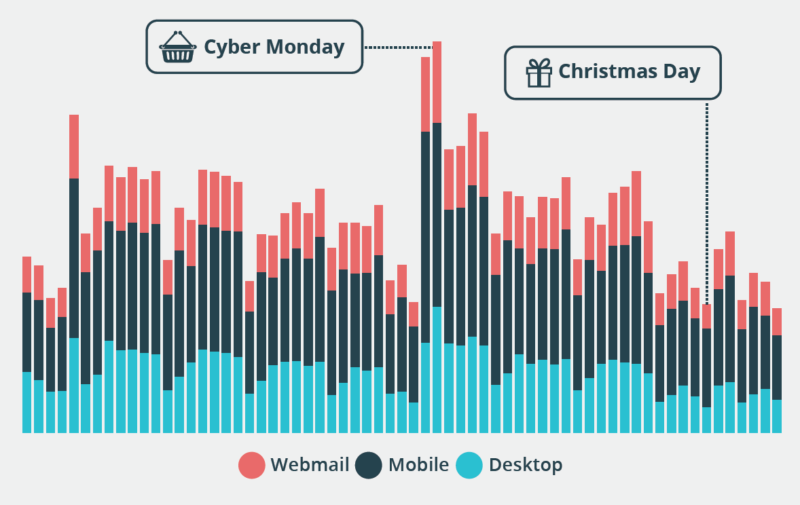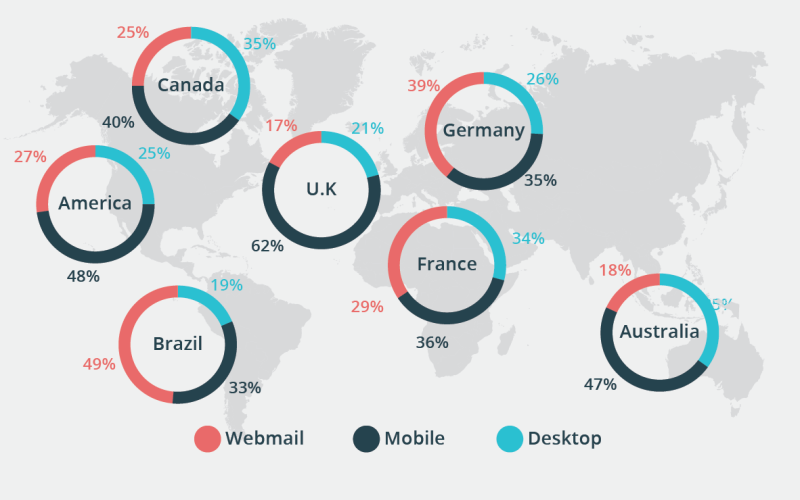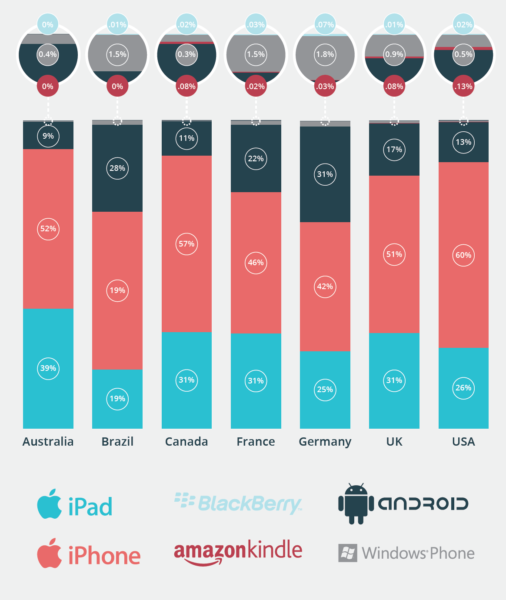The Email Year In Review: Data, Data Breaches & Multi-Screen Consumers
What developments have we seen in 2014 that promise to have a big impact on email marketing? Contributor Tom Sather details the trends to watch.

This past year has seen a lot of activity in the email landscape. The biggest influencer was Google, which launched new products to offer a more personal email system for its customers and to take advantage of its wealth of data.
E-marketers and mailbox providers are not the only ones taking advantage of email this year; scammers have also found email to be a great revenue opportunity.
Following, are the most important developments in the email space in 2014, which will continue to influence marketing in the year to come and beyond.
Little Inbox, Big Data
Google made headlines throughout this year with its launch of three new email advancements. Towards the beginning of this year, Google released Gmail Grid View which allowed marketers to showcase an ad image and their logo in the inbox, in addition to their subject line and preheaders.
This new image-based view provided Gmail users a creative visual display of their promotional emails and the ability to infinitely scroll through their inbox — providing a catalog-like feel to their shopping specific emails.
For email marketers, this new view created an opportunity to stand out in the inbox both because of the additional visuals as well as via the “Top of inbox” paid advertisement.
The most recent Google release, Inbox, is a visual revamp of Gmail’s inbox platform — an alternative way to view and deal with email.
Currently available by invitation only, Inbox focuses more on inbox personalization and organization by content rather than organizing by chronological order like most mailbox providers. Additionally, users can “snooze” messages and have them appear later, when they’re ready to deal with them.
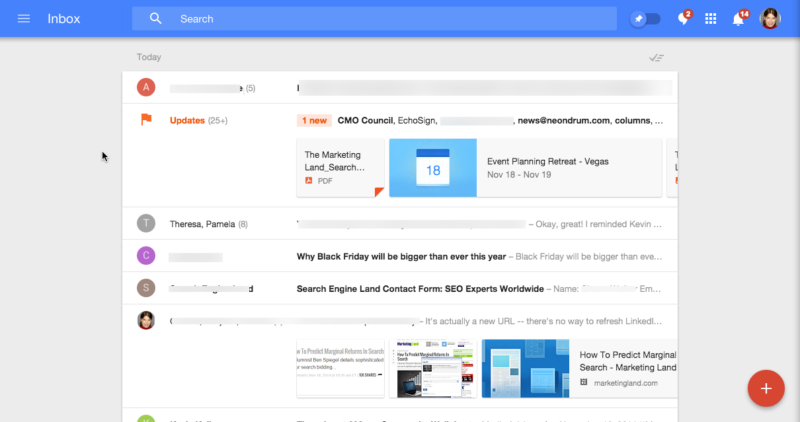
Expanding on last year’s Gmail Tabs release, Inbox offers four additional standard tabs (now called bundles) of Finance, Purchases, Travel, and Low Priority as well as the ability for Inbox users to create their own personalized bundles.
Why is Google investing so much in Gmail recently? Google realizes that the inbox is a data treasure trove and can help it not only serve more relevant ads, but also further monetize the inbox — which is becoming more challenging as users shift to mobile. I expect Google to continue its investments in email data and mobile in 2015.
Living In a Multi-Screen World
Email on mobile seems to have leveled out, with mobile open rates declining from highs in the fourth quarter of 2013, suggesting what device people use is becoming more about context — they make their device choices based on where they are and what they’re doing, rather than on any preference for a specific device.
Mobile open rates reached a high of 51% in December of last year, but then declined to 46% in May of 2014, according to Return Path’s (my employer) recent report on mobile trends. Mobile email consumption continued to rise throughout the year, but only reached 49% in November of this year, compared to 50% last year.
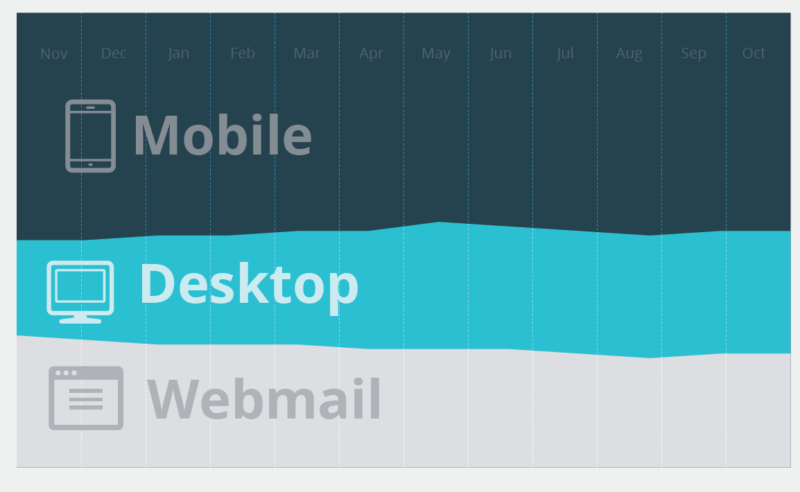
Open rates on Mobile, Desktop & Webmail from Nov 2013 to October 2014, based on data from Return Path
This doesn’t mean that mobile is losing its importance. The proliferation of tablets, mobile phones and laptops — as well as the blurring of the lines between tablets and laptops — create more choices for consumers.
A recent study by Google (PDF) found that 90% of the time, it takes two devices for people to accomplish a task, and what device they use is based on context.
For example, Cyber Monday was the biggest day of the year for email opens last year and that trend continued this year (so far, at least), according to the Return Path data. Not surprisingly, the day was also the peak for emails opened on desktops last year. However, more emails were opened on mobile than on any other type of device on Cyber Monday in 2013.
Based on our analysis of last year’s data, I believe people are more likely to open emails on a smartphone or tablet on Christmas day, as well.
Globally, email usage on mobile devices is more complex.
Emerging markets like Brazil still overwhelmingly check emails in a webmail interface. Germany and France see the least variation, but Germans slightly prefer webmail (39%) and the French sway to mobile (36%). Brits overwhelmingly check emails on mobile devices (60%).
There’s one thing all countries share, however — if an email is opened on a tablet or smartphone, it’s likely that device will be running Apple’s iOS. Only Germany saw Android usage above 30% (31%).
Amazon and Windows have an uphill battle to gain any market share. The Kindle Fire only had a .13% share in the U.S. when it comes to email opens, and that number was .5% for the Windows Phone.
It’s not likely we’ll see these numbers change too dramatically in 2015.
Marketers can use this information to prepare for multi-screen customer experiences, but a mobile design strategy is no longer a “nice to have;” it’s a “must have” for 2015.
Data Breaches & Fraud Protection
Data breaches are not a new occurrence but the depth and severity of these breaches has been increasing over the years.
According to the Identity Theft Resource Center, the number of data breaches identified during this past Black Friday/Cyber Monday week totaled 708, a 26% increase over the same period last year.
One recent (and high profile) email data breach involved the home improvement retailer Home Depot. Toward the end of 2014, Home Depot was the target of a massive data breach resulting in 56 Million credit cards and 53 Million email addresses (PDF) of their customers being stolen.
After identifying the breach, Home Depot reached out to affected customers warning of the email breach and provided additional information on how to avoid phishing scams.
Understanding and avoiding phishing scams is not just important for customers, Companies that want to protect their brand and their customers need to take steps against phishing.
According to a Trend Micro study (PDF), 91% of all data breaches occur as a result of a “spear phishing” email. Spear phishing is an evolved form of phishing that is more personally targeted to the email user.
A spear phishing email that contains the recipient’s personal information is harder for email users to identify as fake at first glance and they’re more likely to engage with it. Examples include an invoice approval or password reset email or even an email purporting to be a real day-to-day contact.
And, once the bad guys get the data, they can use it to concoct spear phishing campaigns targeting the businesses’ customers. The Target data breach of last year was reportedly caused by a phishing attack against one of Target’s vendors.
To protect against data breaches, companies should be checking DMARC on all inbound email (and recommending the practice to their vendors, as well).
The Domain-based Message Authentication, Reporting & Conformance specification (DMARC) provides receiving ISPs the ability to separate out your brand’s genuine email from spoofed email that failed authentication.
Leveraging SPF and DKIM, DMARC protects your customers from spoofed email as well as providing DMARC users feedback on the health of their email authentication program.
While DMARC isn’t a silver bullet for these types of attacks, and may not have prevented these data breaches, businesses should be doing everything they can to stop fraud, and email marketers can do their part by implementing DMARC.
Contributing authors are invited to create content for MarTech and are chosen for their expertise and contribution to the martech community. Our contributors work under the oversight of the editorial staff and contributions are checked for quality and relevance to our readers. MarTech is owned by Semrush. Contributor was not asked to make any direct or indirect mentions of Semrush. The opinions they express are their own.
Related stories
New on MarTech
